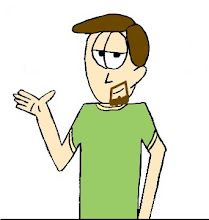Once again, it was Global Game Jam this weekend!
I was again jamming at MIT, though now that the
MIT Game Lab has dropped the GAMBIT part and moved onto the main campus, the logistics were a bit different this year. The presentations were held in one of the auditorium-classrooms, and everyone jammed in some of the classrooms in building 26. They were pretty lax about the food, which was nice, compared to the Boston FIG Jam which was held in the same rooms. The funny thing is, I've only been to MIT a handful of times, but every time has been in these same classrooms - despite the large campus, I'd think these were the only classrooms available in the entire school.
The theme this year was another simple one - a heartbeat.
I had brainstormed a bit with one of the sound guys there, and ended up with a game pitch where sound factored heavily into gameplay, because of course. However, he decided to go with another project, and I ended almost by myself, though awesome sound designer Dan Perry opted to join the project. I had worked with him a couple years ago on the Punk is Dead project.
Sound Maze
Yes, a rather uncreative working title. The game is a first-person maze/labyrinth navigation game. It takes place in two parts - the first half where you maneuver around normally, as you might expect with any videogame. When you grab the icon in the center, the game shifts to the second phase, where you have to find your way back out in near-total darkness, using your sense of hearing to guide you.
There are two mazes here, so finding your way back out is not as simple as retracing your steps. The original pitch included the idea that the "visual" maze remained visible while you had to navigate the "audio" maze - open passageways might be blocked, and you could walk though some walls on the screen. Luckily, the overall game design was simple enough that the prototype was finished fairly early on Saturday, and we were able to playtest it. We had found that our progress in teaching the player to navigate by sight was negated by literally changing the rules midway through, and it was very frustrating and confusing trying to push in certain directions fruitlessly. So, we changed it to darkness, where your sense of sight was instantly disabled. The goal object in this half emanates a heartbeat, which gets louder as you approach - this came from a thought I had about not approaching a sound, but rather you hearing your own heart beating in your chest as you approach the end.
A lot of the tweaks from there on involved adding hand-holding for players. None of the feedback systems (player movement, sounds when approaching walls, sounds when hitting walls) are terribly robust, so a player can get lost or frustrated quickly. So, the "sky" was set to a very dark gray rather than black, so there is a little bit of light available. We also added lantern flashes, crudely added as the walls lighting up, to give the player a brief glimpse of where they are. We also found, with the mazes I had slapped together, that reaching the goal in the dark half required the unintuitive task of moving away from the heartbeat (where the goal was) before rounding a corner and heading back. This was fixed by altering the hidden maze a bit to avoid backtracking.
What Went Right: Thankfully the design was simple enough that I felt the game was adequately complete early on, allowing for time for tweaking rather than trying to get it to run at all. Since I decided upon a 3D first-person perspective, I felt Unity was a good engine to develop in. While I don't have a lot of experience developing in Unity, I know the basics, and I felt this was a great opportunity ti dive in and have a "trial by fire". And because I was the only developer, source control wasn't a great concern as everything was saved on my machine.
What Could Go Better: That being said, ideally I would've liked at least one other person, familiar with Unity, to have been on the team. A lot of really basic things probably could have been solved early on (and special thanks to Michael Carriere and Alex Schwartz for helping me with such issues) that could have left time for more feature development. An artist of some type would have helped too, whether it was by making the game not look so ugly, or perhaps helped with the lighting to aid gameplay and provided a better sense of atmosphere. One of my stretch goals was to include randomly generated mazes, which might've happened if someone else was there to share the burden of development.
I'm really pleased how the game turned out, though, despite the prolific "programmer art". Further tweaks that could be made are cleaning up the movement and audio feedback, sound optimization, and the aforementioned random mazes.
Another nice thing about programming the game in Unity - not only does it run on PC and Mac, but you can export a web build! So you can
play the game right here - like I said, the sound needs optimization, so it'll take a while to load...please be patient.





